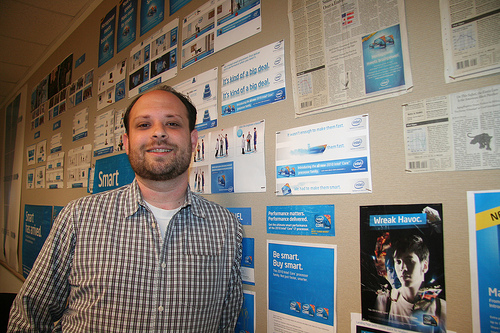
There is no greater input for any marketing strategy than listening to customers in their own words express the impact of a product or service. Market research supports marketing in creating a deeper understanding of the marketplace, competitive environment, organization’s image and competencies, and customer needs and wants.
There are two main types of market research: quantitative and qualitative.
Qualitative Market Research
Qualitative market research looks to probe for the answer to deep questions such as why people feel the way they do, and why they do what they do. The main types of qualitative research are focus groups (e.g. face-to-face, dyads, triads, etc.) and one-on-one in-depth interviews.
Qualitative marketing research stands out from quantitative marketing research in that data is gathered from a small group of respondents and that that data is not put through statistical analysis. Author Malcolm Gladwell http://adage.com/article/viewpoint/focus-groups-abolished/104151/ has pointed out that, “market research, when it is observational or when it is interpretative, is profoundly useful”, however he warns practitioners to consider the right approach to interpret the data obtained in such ways.
The main two types of qualitative research are focus groups and in-depth conversations.
In-Depth Interviews
In-depth interviews are conducted one-on-one and are best suited for understating personal, opinions, beliefs and values. Busy, time-pressed high-level executives prefer this approach to focus groups. Also, this type of interviews is more cost-intensive than focus groups because they require highly skilled interviewers that not only must be able to gather useful information over extended periods of time but also must be able to interpret from a wide range of responses. In-depth interviewers make use of several techniques such as laddering, hidden issue questioning and symbolic analysis.
Focus Groups
On the other hand, focus groups are best suited for groups, usually up to 12 participants. Led by a moderator, the focus group will go through a prepared discussion guide in which the subject of discussion (e.g. company, product, service) may or may not revealed. The activity of focus groups is often recorded in order to provide context to the dialogue from participants through their facial expressions, gestures and language nuances.
Both in-depth interviews and focus groups can also be implemented asynchronically through online tools.
Quantitative Market Research
On the other hand, quantitative market research seeks for the answer to specific questions such as how many people feel, think, or act in a particular way. The main forms of quantitative research are polls and surveys.
“When the market changes, you may be seeing all the new opportunities and problems the wrong way because of the solutions you’re used to”, stated marketing expert Seth Godin http://sethgodin.typepad.com/seths_blog/2009/11/hammer-time.html back in 2009. This is particularly true when selecting what quantitative research method to use. A common pitfall of companies is to become too comfortable with a particular sampling method that they often ignore better alternatives.
Here is a primer on the different options you have available for quantitative research.
- Mail-back Surveys. This is a particularly effective method with mature audiences that prefer more traditional and less intrusive communication methods, however it is the most expensive one due to ever-raising postage costs.
- Phone Surveys. An effective method for companies that are looking for statistical significance, which the marketing firm can achieve trough cold calling randomly selected phone numbers.
- Online Surveys. The Internet allows respondents to have he benefit of running the survey at their own pace, just like under mail-back surveys, but enable the company to both save postage costs and receive feedback immediately.
- In-Person Surveys. Savvy marketing research firms will have their offices or rent office spaces in downtown locations to provide respondents the convenience of filling out surveys during their lunch break, or before or after work hours. In-person surveys provide the double benefit of immediate reward and convenience to the respondent.
- Hybrid Surveys. Depending on your company’s budget, you can mix and match the different types of polling methods to optimize the number of respondents to your surveys.
Just like Seth explained, take a second look at your business problems through a fresh marketing approach.
Takeaway
Market research is the most important part of marketing because it is at the core of what the field is all about: establishing the relationship between the individual and the brand, and fully understanding that relationship so that you can articulate it in such a way that other people want to try out the brand. If you don’t have the in-house expertise to run quantitative or qualitative market research, consider outsourcing those task to a qualified expert. For example, click here to learn more about a great company that serves London and New York. Hiring the services of a third party guarantees that the results of the research are impartial.
Image Credit: Intel Free Press

